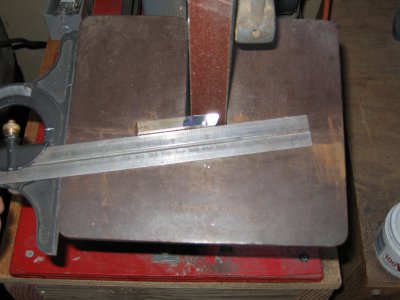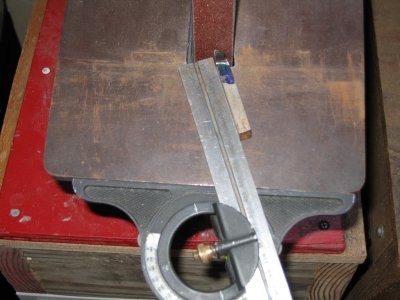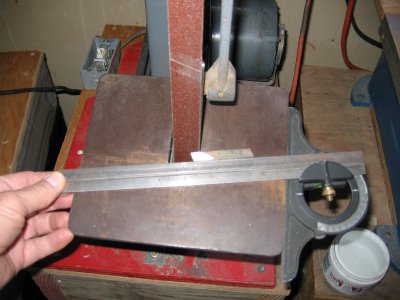- Joined
- Jul 17, 2020
- Messages
- 323
There's a lot of info about this online already, but off the top of my head:
If you're holding the HSS in your hands, you will never get it hot enough to affect the heat treatment. You can pretty much get it glowing red hot, and it will burn its way through your hand, and still be fine. I personally keep a 5 gal bucket of water next to my grinder that I dump outside every few months. I use it to cool off anything I need.
This wasn't specifically part of your question, but practice freehand grinding. You can do so much more a lot faster than setting tables to specific angles. One of the best things you can do for yourself is get a grinding gage like this one (Clicky). I have the same one and love it. In fact, I suggest you buy that one in the link lol. Before I do......
You can pretty much get by with whatever wheels come with whatever cheap grinder you get. There are of course better ones, I've been happy with this one (Clicky). It won't grind carbide though. Make sure to get a diamond hand held wheel dresser too, to flatten the wheel as grooves are worn in. Balancing isn't usually a thing with cheap grinders, but you can do pretty well with a simple skateboard bearing jig and adding/removing weight on one of the flanges, like by drilling holes on one side or adding screws to the other.
Of course this is all assuming single point lathe bits or flycutters. If you want to grind fluted endmills, you'll really need a proper grinding jig.
If you're holding the HSS in your hands, you will never get it hot enough to affect the heat treatment. You can pretty much get it glowing red hot, and it will burn its way through your hand, and still be fine. I personally keep a 5 gal bucket of water next to my grinder that I dump outside every few months. I use it to cool off anything I need.
This wasn't specifically part of your question, but practice freehand grinding. You can do so much more a lot faster than setting tables to specific angles. One of the best things you can do for yourself is get a grinding gage like this one (Clicky). I have the same one and love it. In fact, I suggest you buy that one in the link lol. Before I do......
You can pretty much get by with whatever wheels come with whatever cheap grinder you get. There are of course better ones, I've been happy with this one (Clicky). It won't grind carbide though. Make sure to get a diamond hand held wheel dresser too, to flatten the wheel as grooves are worn in. Balancing isn't usually a thing with cheap grinders, but you can do pretty well with a simple skateboard bearing jig and adding/removing weight on one of the flanges, like by drilling holes on one side or adding screws to the other.
Of course this is all assuming single point lathe bits or flycutters. If you want to grind fluted endmills, you'll really need a proper grinding jig.




